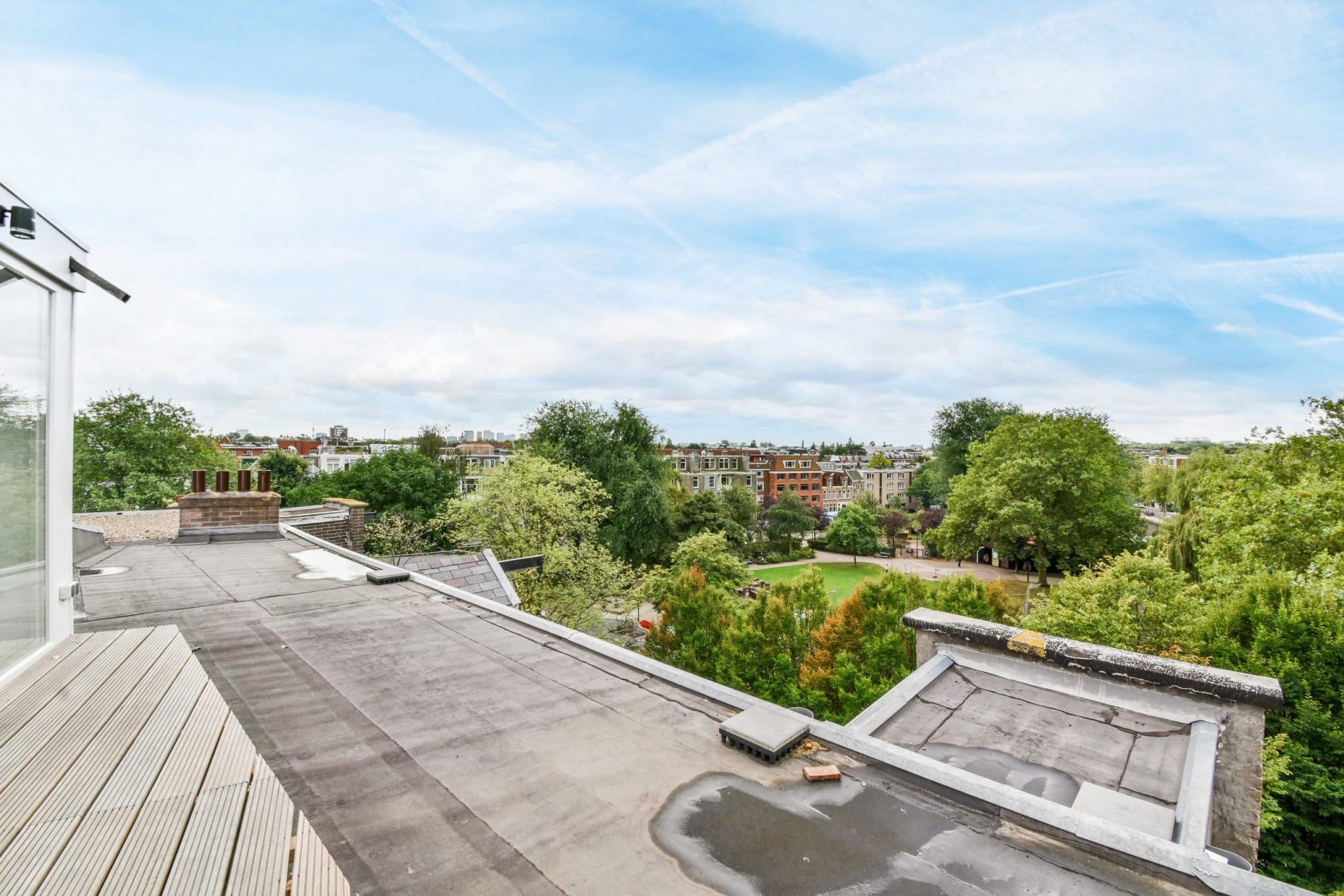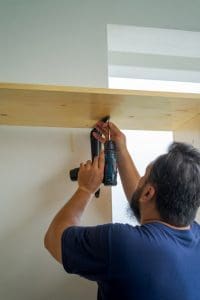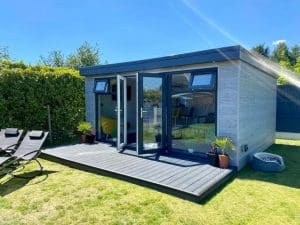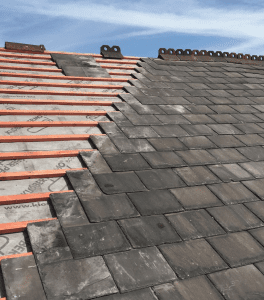Flat roofs have become increasingly popular across the UK for their sleek, modern aesthetic and practical design. They offer homeowners versatility, especially in urban settings, and can enhance the functionality of their homes in ways that traditional pitched roofs might not. However, flat roofs come with their own set of challenges, including unique maintenance requirements, potential durability concerns, and weather-related issues. In this comprehensive guide, we’ll explore the advantages and disadvantages of flat roofs, as well as provide essential maintenance tips to help UK homeowners keep their flat roofs in optimal condition.
Advantages of Flat Roofs
1. Modern Aesthetic Appeal
One of the most significant advantages of flat roofs is their clean, contemporary design. Flat roofs create a minimalist, sleek look that complements a wide variety of architectural styles, from modern homes to commercial buildings. In urban settings, where space is at a premium, flat roofs can enhance the visual appeal of homes, providing a distinct, stylish contrast to traditional pitched roofs.
2. Maximising Usable Space
Flat roofs allow for the efficient use of space, making them a great choice for homeowners looking to create additional functional areas. Many homeowners convert their flat roofs into rooftop gardens, terraces, or outdoor lounges. This extra space can significantly enhance your property’s value and provide a serene escape in the heart of a city. Some even use flat roofs to install small greenhouses, creating eco-friendly spaces for growing plants and vegetables.
3. Ease of Access
Unlike pitched roofs, flat roofs are much easier to access, making routine maintenance, cleaning, and repairs more straightforward. This accessibility not only saves homeowners time but also reduces labour costs for contractors. Whether it’s checking for debris, inspecting seals, or conducting simple repairs, the level surface of a flat roof provides a safer and more accessible workspace for professionals and homeowners alike.
4. Energy Efficiency Potential
Flat roofs provide an excellent platform for the installation of energy-efficient technologies, particularly solar panels. Due to their level surface, solar panels can be installed at the optimal angle for maximum energy production. Moreover, flat roofs are often well-insulated, helping to retain heat during colder months. The design also lends itself to the installation of eco-friendly roofing materials such as reflective coatings, which can enhance energy efficiency by reflecting heat during warmer months, reducing cooling costs.
5. Design Flexibility
Flat roofs offer unique opportunities for customisation. Homeowners can choose from a variety of modern materials and finishes to suit their preferences. For example, green roofs are an increasingly popular choice, where vegetation is planted on the roof to absorb rainwater, provide insulation, and reduce heat island effects in urban environments. Flat roofs also provide more freedom when it comes to drainage solutions, allowing homeowners to experiment with different techniques to improve water runoff.
Disadvantages of Flat Roofs
1. Water Drainage Challenges
One of the main drawbacks of flat roofs is the potential for drainage issues. Unlike pitched roofs, which naturally direct rainwater away from the building, flat roofs rely on well-designed drainage systems to prevent water from pooling. Without proper drainage, water can accumulate on the surface, increasing the risk of leaks and long-term structural damage. Flat roofs require a slight slope to encourage water flow, and ensuring drains are clear is crucial to avoid these issues.
2. High Maintenance Demands
Flat roofs require more regular maintenance than pitched roofs. Dirt, debris, leaves, and water can accumulate more easily on the flat surface, especially around drainage points, leading to clogs and standing water. Routine cleaning is essential to prevent damage from blocked drains and water pooling, which can accelerate wear and tear. The constant exposure to weather elements means that flat roofs also require more frequent inspections to ensure the materials remain in good condition.
3. Shorter Lifespan
While modern materials and technologies have improved the lifespan of flat roofs, they generally do not last as long as pitched roofs. Most flat roofs have a lifespan of around 20 to 25 years, compared to the 40 to 50-year lifespan of traditional pitched roofs. Factors such as UV exposure, water damage, and foot traffic can cause flat roofs to deteriorate more quickly, making high-quality materials and proper maintenance crucial for longevity.
4. Leak Prone
Flat roofs are more susceptible to leaks than their pitched counterparts. The absence of a steep slope means water can pool in certain areas, leading to leaks if the roof is not properly sealed. Even minor leaks can lead to significant internal water damage, which can compromise the structural integrity of the building and result in costly repairs. Homeowners must remain vigilant and regularly check for signs of leaks, such as water stains on the ceiling or walls.
5. Higher Initial Costs
The initial installation of a flat roof can be more expensive than a pitched roof due to the specialised materials, insulation, and waterproofing requirements. Flat roofs require advanced waterproofing techniques, such as the use of membranes or rubber coatings, to prevent leaks and ensure durability. While these materials contribute to the roof’s longevity, they also increase the upfront installation costs.
Essential Maintenance Tips for Flat Roofs
To extend the life of a flat roof and prevent costly repairs, consistent and proactive maintenance is essential. Here are some key maintenance tips for flat roof homeowners in the UK:
1. Conduct Regular Inspections
Flat roofs should be inspected at least twice a year, particularly before and after the rainy season. Look for signs of water pooling, damage to the roofing material, cracks, and debris buildup. Early detection of potential problems can save you significant repair costs in the future. For areas that experience heavy rainfall or snowfall, consider scheduling additional inspections during extreme weather conditions.
2. Clear Debris and Maintain Drains
Flat roofs are prone to accumulating debris such as leaves, branches, and dirt. Regularly clearing away this debris is vital to maintaining proper drainage and preventing clogs. Blocked drains can cause water to pool on the surface, leading to leaks and structural damage. Nearby trees should be trimmed to reduce the amount of debris falling onto the roof.
3. Address Ponding Water Promptly
If you notice standing water on your flat roof after rainfall, take immediate action to resolve the issue. Ponding water can lead to rapid deterioration of the roof materials and increase the likelihood of leaks. Installing an additional drainage system or adjusting the slope of the roof may help prevent water from pooling.
4. Check Seals and Flashing
Regularly inspect the seals around roof penetrations such as chimneys, vents, and skylights. These areas are especially vulnerable to water infiltration if the seals deteriorate over time. Damaged or missing flashing should also be replaced to maintain the roof’s watertight integrity.
5. Schedule Professional Maintenance
While some flat roof maintenance tasks can be performed by homeowners, hiring a professional roofing contractor for regular inspections and repairs is recommended. Professionals have the experience and equipment to identify issues that may not be visible to the untrained eye, ensuring that any potential problems are addressed before they escalate.
6. Apply Protective Coatings
Consider applying a protective coating to your flat roof to extend its lifespan and improve its performance. Reflective coatings, for example, can reduce heat absorption and help regulate indoor temperatures, while waterproof coatings provide an extra layer of protection against leaks.
7. Address Repairs Promptly
If you notice cracks, blisters, or any signs of damage on your flat roof, it’s essential to address these issues as soon as possible. Small problems can quickly develop into larger, more expensive repairs if left unattended.
Conclusion
Flat roofs offer a modern, stylish alternative to traditional pitched roofs, with the added benefits of space utilisation and design flexibility. However, they come with unique challenges that require regular maintenance and careful attention to drainage, durability, and leak prevention. By taking proactive steps to maintain your flat roof and investing in high-quality materials, UK homeowners can enjoy the aesthetic and functional advantages of flat roofs while minimising their drawbacks.
For professional guidance and expert flat roof maintenance, repairs, and installations, trust 3D Construction—your reliable roofing contractor across the UK. Our team has the expertise to help you get the most out of your flat roof while ensuring it remains in top condition for years to come.




